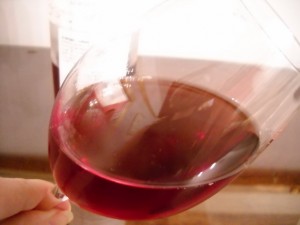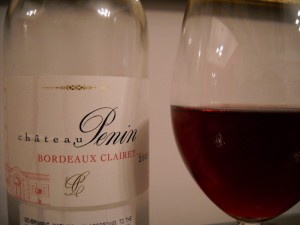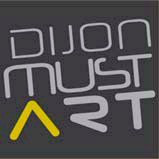With the excessively snow-filled season, I think most of us are ready for winter to be over. Accordingly, March’s arrival and its hints at Spring, which is yet to come, is most welcome. However, despite the bad weather, February found Grand Cru Classes keeping busy with media appearances and teaching opportunities.
In concert with Valentine’s Day, Tracy “appeared” on Big Blend magazine’s Champagne Sundays radio show in early February to talk about Sex, Wine & Chocolate. If you missed this broadcast, you can hear the interview online. She will be penning a new column for Big Blend magazine – Words of Winedom – under the title of Grand Cru Guru and will be periodically featured on their radio shows. Her next “appearance” will be April 27 at 3:30 PM EST on Eat, Drink & Be Merry on the topic of wines to accompany burgers & BBQ.
Also, while not wine related, both Tracy and Jared taped a segment for the Tyra Banks Show, which should air later this month.
Of course, live appearances included our Long Island wines class at City Winery, held on February 26. We are grateful to: Comtesse de Therese, Macari Vineyards, Martha Clara Vineyards, Peconic Bay Winery, Waters Crest and Wölffer Estate for their generosity and support in making this event a success!
Looking ahead, Sex, Wine & Chocolate returns to New York on March 19. Women only are invited to please join us at 7:00 PM for an evening of sensuality and decadence. Please see our website to sign up or see more details.
In addition, Tracy’s Great Grapes! series at New York University’s School of Continuing & Professional Studies begins March 24 at 6:30. As a reminder, registration is through NYU only.
And, for your drinking pleasure at home, this month we turn our attention to the wine regions scattered along the Loire River, which should delight your palate as well as your pocketbook.
Drink wisely and well,
Tracy Ellen Kamens, Ed.D., DWS, CWE
CEO: Chief Education Officer
and
Jared Michael Skolnick
COO: Cork Opening Officer
A RIVER RUNS THROUGH IT
The Loire River is the longest navigable river in France, covering a distance of 629 miles and stretching from the Atlantic Ocean to the center of France before heading south. Here, in the land of castles and Kings, French royalty would spend their summers in the countryside away from the hustle and bustle of Parisian city life, a precursor to the Hamptons summer season. From West to East, there are four wine areas within the greater Loire Valley region: Nantais, Anjou-Saumur, Touraine and Central Vineyards. With the vast distance covered, a diversity of climates, grapes and wines exist, making the river among the only threads that tie this large wine region together. However, despite their differences, most of these wines are quite food friendly and offer great value.
At the western coast, along the Atlantic Ocean, visitors find themselves in Nantes, where the Melon de Bourgogne grape is produced into Muscadet, a wine with dry, crisp acidity and citrus and mineral notes. The best wines hail from Sevre-et-Maine and are labeled as such. In addition, wines labeled “sur lie” are those which have sat on the lees (spent yeast cells) for at least six months, which imparts a yeastiness, and are generally richer and fuller-bodied. Muscadets pair beautifully with the shellfish which abound in the port, especially oysters and mussels.
Moving inland and east, the climate changes as do the grape varieties. In Anjou-Saumur, we find Chenin Blanc, which has versatility and then some, with the ability to produce outstanding wines in nearly all styles – dry, sweet, still, sparkling, youthful and aged. Dry whites include Savennieres (which is particularly age worthy) while Coteaux du Layon, Quarts de Chaume and Bonnezeaux are the product of grapes, which have been affected by noble rot, creating unctuous dessert wines. Sparkling wines from this area are made in both fully sparkling and petillant (1/2 pressure) styles. A profusion of rosés abound ranging from dry (Rosé de Loire) and slightly sweet (Cabernet d’Anjou and Cabernet de Saumur) to sweet (Rosé d’Anjou). In addition, some Cabernet Franc, Cabernet Sauvignon and Gamay are grown here to produce dry, fruity light-bodied reds found under the appellations of AC Anjou, AC Saumur and AC Saumur-Champigny.
Further inland, Touraine sports a continental climate, with more extreme temperature variations from winter to summer. This is the largest area within the Loire, with a wide variety of wines produced. White wines range from the dry Sauvignon de Touraine and AC Touraine, both made from Sauvignon Blanc, to AC Vouvray, produced from 100% Chenin Blanc. As with the Chenin Blanc in Anjou-Saumur, Vouvrays may be dry, medium-sweet or sweet, and may be still or sparkling. The wine style may be designated on the label, i.e. sec (dry) or moelleux(sweet). High quality red wines, made from Cabernet Franc, tend to exhibit herbaceous and raspberry notes in AC Chinon, with similar, but fuller-bodied wines coming from AC Bourgeuil and AC St-Nicholas-de-Bourgeuil. Red wines labeled as AC Touraine are a blend of Gamay and Cabernet Franc.
At the furthest point east, the Central Vineyards serve as the heartland of Sauvignon Blanc, producing wines, which are more mineral and less fruit-forward than their New Zealand brethren, primarily due to the complex soils found here. Key appellations include: AC Sancerre, AC Pouilly Fume, AC Menetou-Salon, AC Quincy and AC Reuilly. With its reputation for high quality wines, Sancerre can become a little pricey, but these latter appellations are less well-known and are thus, generally less expensive. Produced in smaller quantities, red Sancerre is made from Pinot Noir, which makes sense given the region’s close proximity to Burgundy.
Tasting Notes
Bouvet Rosé Excellence Brut NV, Loire Valley, France, $13.00
This sparkling wine has a beautiful pale salmon color. Medium aromas of cotton candy, yeasty/leesy notes, floral/blossom and under-ripe strawberries. Dry with medium acidity and medium mousse, it has flavors of ripe strawberry, yeast and watermelon Jolly Rancher, along with its long length.
Domaine Les Hautes Noëlles, Les Grange Muscadet sur lie, 2005, Muscadet-Côtes de Grandlieu, France, $10.00
A youthful wine with leesy aromas and notes of apple, citrus, it has medium+ acidity and medium body. The palate includes flavors of lime, yeast and minerality.
Vincent Raimbault, Vouvray Sec 2004, Vouvray, France, $15.00
On the nose, the youthful aromas of apples, almond and lanolin linger, giving way to flavors of almond, apple and honey and crisp acidity on the palate.
Vincent Gaudry, Sancerre, Melodie de Vielles Vignes 2006 Sancerre, France $22.00
Produced from 50-year old vines, this wine has pronounced aromas of minerality, citrus and grapefruit. The medium+ acidity is joined by flavors of citrus and apple which persist on the palate, followed by a hint of stone in the finish.
Joguet Chinon Cuvee Terroir 2005 Touraine, France $18.00
The nose shows limited fruit notes of berries, oak and vanilla. In the mouth, it is dry, with ripe berry fruit, medium acidity, medium+ tannins, and herbal and woody notes in the finish.
Chateau de Fesle Bonnezeaux 2003, Anjou-Saumur, France, $63.00
This dessert wine provides developing aromas of apricot, orange peel, honey, floral and spice. It is medium sweet on the palate with medium+ acidity and pronounced flavors of apricot, honey, spice coupled by a nutty note underneath its long length.
 The 2009 vintage in Bordeaux continues to receive rave reviews, but for now, the only red wines available for purchase are being sold as futures. Instead, consumers can look to Bordeaux’s whites and rosés – yes, you read that right, rosés – for a taste of this vaunted vintage.
The 2009 vintage in Bordeaux continues to receive rave reviews, but for now, the only red wines available for purchase are being sold as futures. Instead, consumers can look to Bordeaux’s whites and rosés – yes, you read that right, rosés – for a taste of this vaunted vintage.

